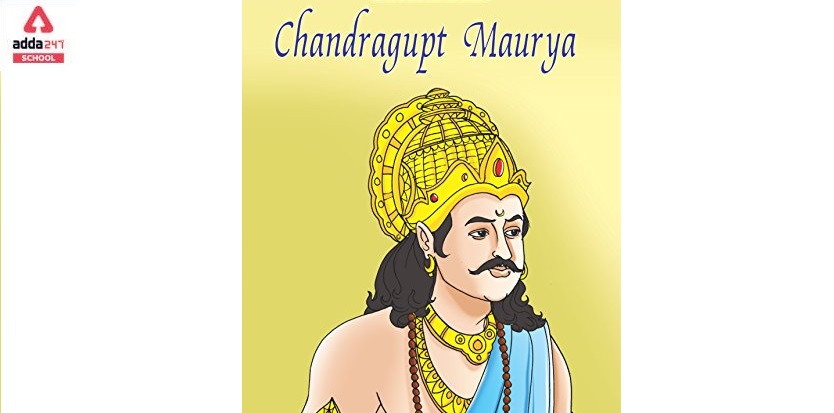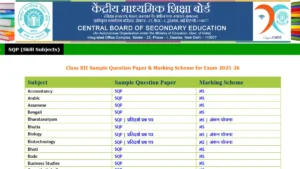Chandragupta Maurya
Chandragupta Maurya (Pli: Candagutta Moriya; Sanskrit: Candragupta Maurya; Ancient Greek: o Sandrákoptos, Sandrákottos, Androkóttos; 350-295 BCE) was a ruler of Iron Age South Asia who founded the Maurya dynasty and expanded a geographically-extensive kingdom centred in Magadha. From 320 BCE to 298 BCE, he ruled. From 268 BCE until 231 BCE, his grandson Asoka ruled over the Maurya kingdom, which grew into an empire. It’s unclear what kind of governmental structure existed during Chandragupta’s reign. The Mauryan empire was a loose confederation of states.
Chandragupta Maurya Father Name
Chandra Gupta Father was Sarvarthasiddhi Maurya.
Chandragupta Maurya: Empire in History
Alexander the Great had invaded the North-West Indian subcontinent before abandoning his campaign in 324 BCE due to a rebellion sparked by the threat of battling another big empire, most likely the Nanda Empire. Both the Nanda Empire and the Greek satraps appointed or founded from Alexander’s Empire in South Asia were destroyed and subjugated by Chandragupta. He headed out to conquer the Nanda Empire, which was located in Magadha’s Pataliputra. In the Seleucid–Mauryan war, Chandragupta expanded and secured his western border, where he was attacked by Seleucus I Nicator. Chandragupta was thought to have gained the upper hand in the warfare after two years of fighting and acquired satrapies up to the Hindu Kush. Rather than prolonging the conflict, all parties agreed to a marriage treaty between Chandragupta and the daughter of Seleucus I Nicator.
Chandragupta’s empire spanned the majority of the Indian subcontinent, extending from modern-day Bengal to Afghanistan to North India and into Central and South India. Chandragupta abdicated his throne and became a Jain monk, according to Jain chronicles dating from 800 years after his death. He then proceeded to South India and committed sallekhana, or death fasting. However, according to contemporary Greek evidence, Chandragupta did not abandon the rites of animal sacrifice connected with Vedic Brahminism, an early type of Hinduism; he enjoyed hunting and otherwise led a life distinct from the Jain practise of Ahimsa, or nonviolence toward living beings. The Maurya Empire, under Chandragupta’s reign, established an age of economic success, reforms, infrastructure developments, and tolerance. Many religions flourished in his territories and the empire of his descendants. Minority religions such as Zoroastrianism and the Greek pantheon were acknowledged, and Buddhism, Jainism, and Ajivika acquired importance alongside Vedic and Brahmanistic traditions. On the Chandragiri hill, there is a memorial commemorating Chandragupta Maurya, as well as a seventh-century hagiographic inscription.
Chandragupta Maurya- Wife, Son, Family, and Death
The circumstances surrounding Chandragupta’s death, as well as the year in which he died, are unknown and contested. According to Digambara Jain sources, Bhadrabahu predicted a 12-year drought as a result of Chandragupta Maurya’s conquests’ killings and bloodshed. After abdicating his empire to his son Bindusara, he led a party of Jain monks to south India, where Chandragupta Maurya joined him as a monk. Chandragupta and Bhadrabahu travelled to Shravanabelagola together, according to a Digambara mythology. These Jain narratives may be found in works like Harishena’s Brihakath koa (931 CE), Ratnanandi’s Bhadrabhu charita (1450 CE), Munivasa bhyudaya (1680 CE), and Rajavali kathe. According to the Digambara mythology, Chandragupta lived as an ascetic in Shravanabelagola for several years before fasting to death as per the Jain practise of sallekhana.
The hill on which Chandragupta is said to have practised asceticism is now known as Chandragiri hill, and Digambaras believe Chandragupta Maurya established an old temple that today stands as the Chandragupta basadi, according to Digambara tradition. Chandragupta’s renunciation of the throne, according to Roy, occurred about 298 BCE, and his death occurred around 297 BCE. Emperor Ashoka, his grandson, is known for his historic pillars and his involvement in the propagation of Buddhism outside of ancient India. Radha Kumud Mookerji says on the inscriptions detailing Bhadrabahu and Chandragupta Maurya’s relationship.
Chandragupta Maurya History in Hindi
चंद्रगुप्त मौर्य (प्लि: कैंडगुट्टा मोरिया; संस्कृत: चंद्रगुप्त मौर्य; प्राचीन ग्रीक: ओ सैंड्राकोप्टोस, सैंड्राकोटोस, एंड्रोकोटोस; 350-295 ईसा पूर्व) लौह युग दक्षिण एशिया के शासक थे जिन्होंने मौर्य वंश की स्थापना की और भौगोलिक दृष्टि से व्यापक साम्राज्य का विस्तार किया। मगध। 320 ईसा पूर्व से 298 ईसा पूर्व तक, उन्होंने शासन किया। 268 ईसा पूर्व से 231 ईसा पूर्व तक, उनके पोते अशोक ने मौर्य साम्राज्य पर शासन किया, जो एक साम्राज्य में विकसित हुआ। यह स्पष्ट नहीं है कि चंद्रगुप्त के शासनकाल के दौरान किस प्रकार की सरकारी संरचना मौजूद थी। मौर्य साम्राज्य राज्यों का एक ढीला संघ था।
चंद्रगुप्त मौर्य पिता का नाम
चन्द्रगुप्त के पिता सर्वार्थसिद्धि मौर्य थे।
चंद्रगुप्त मौर्य: इतिहास में साम्राज्य
सिकंदर महान ने 324 ईसा पूर्व में अपने अभियान को छोड़ने से पहले उत्तर-पश्चिम भारतीय उपमहाद्वीप पर आक्रमण किया था, एक और बड़े साम्राज्य से लड़ने के खतरे से उठे विद्रोह के कारण, सबसे अधिक संभावना नंदा साम्राज्य। नंदा साम्राज्य और दक्षिण एशिया में सिकंदर के साम्राज्य से नियुक्त या स्थापित ग्रीक क्षत्रपों को चंद्रगुप्त द्वारा नष्ट और अधीन कर दिया गया था। वह नंदा साम्राज्य को जीतने के लिए निकला, जो मगध के पाटलिपुत्र में स्थित था। सेल्यूसिड-मौर्य युद्ध में, चंद्रगुप्त ने अपनी पश्चिमी सीमा का विस्तार किया और सुरक्षित किया, जहां उस पर सेल्यूकस आई निकेटर द्वारा हमला किया गया था। माना जाता है कि चंद्रगुप्त ने दो साल की लड़ाई के बाद युद्ध में ऊपरी हाथ हासिल कर लिया था और हिंदू कुश तक क्षत्रप हासिल कर लिया था। संघर्ष को लंबा करने के बजाय, सभी पक्ष चंद्रगुप्त और सेल्यूकस I निकेटर की बेटी के बीच एक विवाह संधि पर सहमत हुए।
चंद्रगुप्त के साम्राज्य ने भारतीय उपमहाद्वीप के अधिकांश हिस्से को आधुनिक बंगाल से अफगानिस्तान तक उत्तर भारत और मध्य और दक्षिण भारत में फैलाया। उनकी मृत्यु के 800 साल बाद के जैन इतिहास के अनुसार, चंद्रगुप्त ने अपना सिंहासन त्याग दिया और जैन भिक्षु बन गए। इसके बाद वे दक्षिण भारत चले गए और सल्लेखना, या मृत्यु उपवास किया। हालांकि, समकालीन ग्रीक साक्ष्यों के अनुसार, चंद्रगुप्त ने वैदिक ब्राह्मणवाद से जुड़े पशु बलि के संस्कार को नहीं छोड़ा, जो हिंदू धर्म का एक प्रारंभिक प्रकार था; उन्होंने शिकार का आनंद लिया और अन्यथा अहिंसा के जैन अभ्यास, या जीवित प्राणियों के प्रति अहिंसा से अलग जीवन व्यतीत किया। चंद्रगुप्त के शासनकाल में मौर्य साम्राज्य ने आर्थिक सफलता, सुधार, बुनियादी ढांचे के विकास और सहिष्णुता के युग की स्थापना की। उसके प्रदेशों और उसके वंशजों के साम्राज्य में अनेक धर्म फले-फूले। पारसी धर्म और ग्रीक पंथ जैसे अल्पसंख्यक धर्मों को स्वीकार किया गया, और बौद्ध धर्म, जैन धर्म और आजिविका ने वैदिक और ब्राह्मणवादी परंपराओं के साथ महत्व प्राप्त किया। चंद्रगिरि पहाड़ी पर, चंद्रगुप्त मौर्य की स्मृति में एक स्मारक है, साथ ही सातवीं शताब्दी का भौगोलिक शिलालेख भी है।
चंद्रगुप्त मौर्य- पत्नी, पुत्र मृत्यु और परिवार
चंद्रगुप्त की मृत्यु के साथ-साथ जिस वर्ष उनकी मृत्यु हुई, उसके आसपास की परिस्थितियां अज्ञात हैं और विवादित हैं। दिगंबर जैन सूत्रों के अनुसार, भद्रबाहु ने चंद्रगुप्त मौर्य की विजय की हत्याओं और रक्तपात के परिणामस्वरूप 12 साल के सूखे की भविष्यवाणी की थी। अपने बेटे बिंदुसार को अपना साम्राज्य छोड़ने के बाद, उन्होंने दक्षिण भारत में जैन भिक्षुओं की एक पार्टी का नेतृत्व किया, जहां चंद्रगुप्त मौर्य एक भिक्षु के रूप में उनके साथ शामिल हुए। दिगंबर पौराणिक कथाओं के अनुसार, चंद्रगुप्त और भद्रबाहु ने एक साथ श्रवणबेलगोला की यात्रा की। ये जैन आख्यान हरिषेना के बृहकथ कोआ (931 सीई), रत्नानंदी के भद्रभु चरित (1450 सीई), मुनिवास भायुदया (1680 सीई), और राजावली कथा जैसे कार्यों में पाए जा सकते हैं। दिगंबर पौराणिक कथाओं के अनुसार, चंद्रगुप्त कई वर्षों तक श्रवणबेलगोला में एक तपस्वी के रूप में रहते थे और फिर सालेलेखन की जैन प्रथा के अनुसार उपवास करते थे।
कहा जाता है कि जिस पहाड़ी पर चंद्रगुप्त ने तपस्या की थी, उसे अब चंद्रगिरि पहाड़ी के रूप में जाना जाता है, और दिगंबर मानते हैं कि चंद्रगुप्त मौर्य ने एक पुराने मंदिर की स्थापना की थी जो आज दिगंबर परंपरा के अनुसार चंद्रगुप्त बसदी के रूप में खड़ा है। रॉय के अनुसार, चंद्रगुप्त का सिंहासन का त्याग लगभग 298 ईसा पूर्व हुआ, और उनकी मृत्यु लगभग 297 ईसा पूर्व हुई। सम्राट अशोक, उनके पोते, अपने ऐतिहासिक स्तंभों और प्राचीन भारत के बाहर बौद्ध धर्म के प्रचार में उनकी भागीदारी के लिए जाने जाते हैं। भद्रबाहु और चंद्रगुप्त मौर्य के संबंधों का विवरण देने वाले शिलालेखों पर राधा कुमुद मुखर्जी कहते हैं|
Related Post:
- Quit India Movement Started In 1942 Date, Year, & Images
- Name Of The Neighbouring Countries Of India 2022
- Email Writing Format & Examples For Students Of Class 12
- Notice Writing Format For Class 12, 10 With Examples
- Largest State And Union Territory In India 2022 In Terms Of Area, Population
- Atomic Mass Of All First 30 Elements PDF Without Decimals
- Leave Application For Sister/Brother Marriage From Office/School
- What Is The National Language Of India 2022?
- Sustainable Development Project, Definition, Goals, Example For Class 10
- The Process Of Conversion Of Sugar Into Alcohol Is Called Fermentation
Chandragupt Maurya- FAQs
Ques: Is Chandragupta Maurya was Hindu?
Ans: According to Hindu scriptures, Chandragupta started from a lowly background and rose to become a dharmic ruler beloved by his subjects after meeting Chanakya. Chandragupta is described as a Kshatriya in Buddhist writings such as the Mahavamsa.
Ques: Which great king was defeated by Chandragupta Maurya?
Ans: Around 325 BCE, Chandragupta deposed the Nanda dynasty and rose to the throne of the Magadha empire, which is now Bihar state in India. Chandragupta won the Punjab province about 322, when Alexander the Great died in 323.
Ques: Did Alexander meet Chandragupta Maurya?
Ans: Chandragupta Maurya, with Chanakya at his side, founded the Mauryan empire barely two years after Alexander’s death. “Despite belonging to the same time period and living in close vicinity (during Alexander’s attempted invasion of India), they never met.
Ques: Did Chandragupta Maurya defeat Alexander?
Ans: On Sunday (November 14), Uttar Pradesh Chief Minister Yogi Adityanath claimed that Chandragupta Maurya, who built the Mauryan empire in the 4th century BC, had vanquished Alexander of Macedon in combat — but historians had decided to term the latter great.
Ques: What religion was Ashoka?
Ans: After becoming dissatisfied with his bloody conquests that murdered hundreds of thousands of people, the Indian monarch Ashoka converted to Buddhism and began treating his subjects with compassion. Emperor Ashoka is credited for transforming the Mauyran Dynasty from a war machine to a Buddhist-based culture of tolerance and nonviolence.









 Bihar Board Exam Date Sheet 2026 Soon, L...
Bihar Board Exam Date Sheet 2026 Soon, L...
 CBSE Class 12 Sample Paper 2026 with Sol...
CBSE Class 12 Sample Paper 2026 with Sol...
 CBSE Class 12 Physics Blueprint 2025-26:...
CBSE Class 12 Physics Blueprint 2025-26:...


















